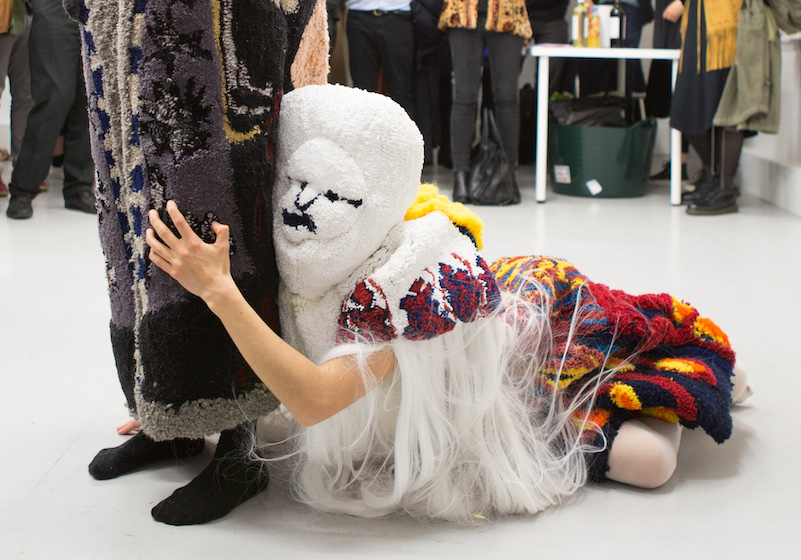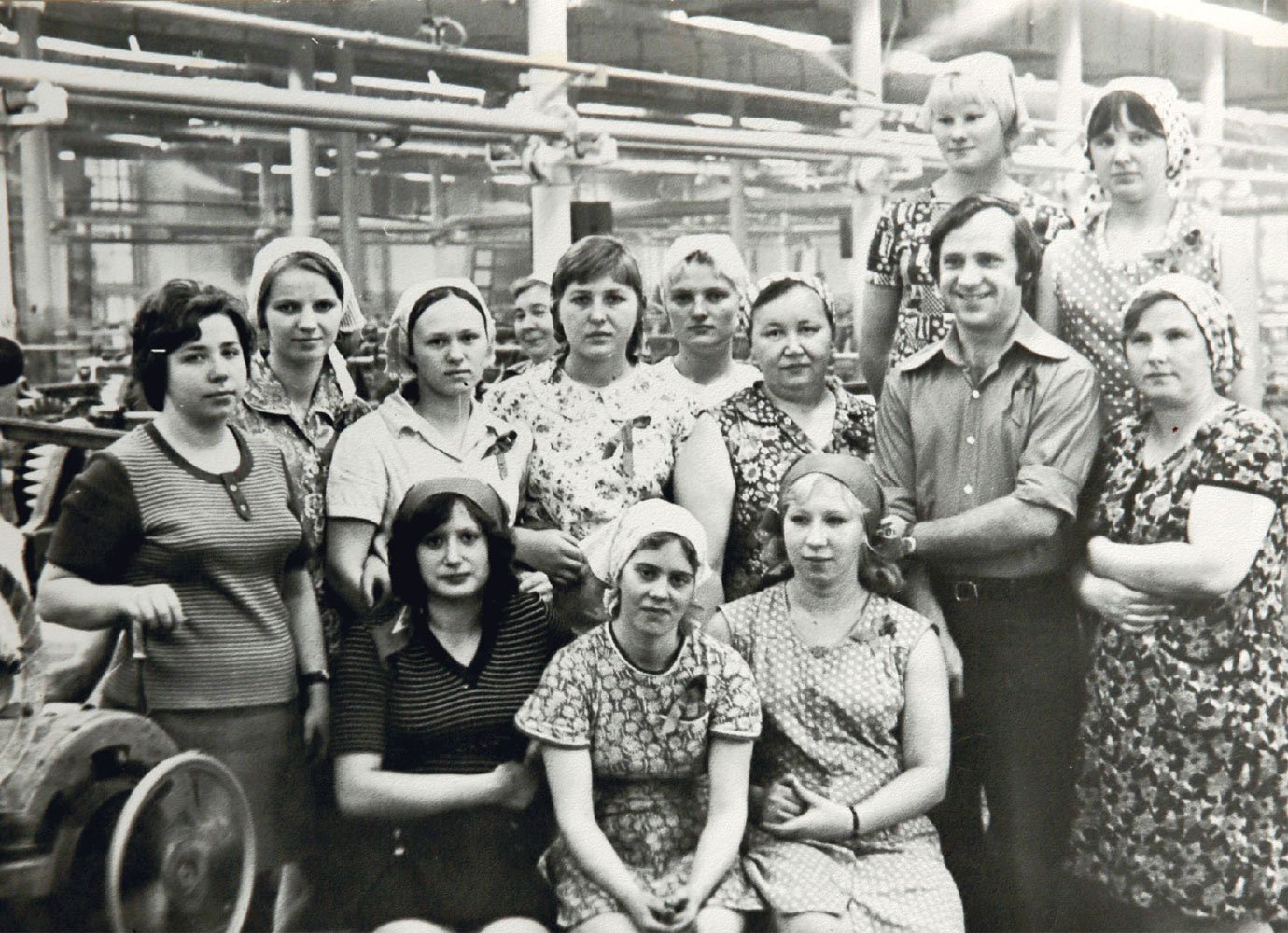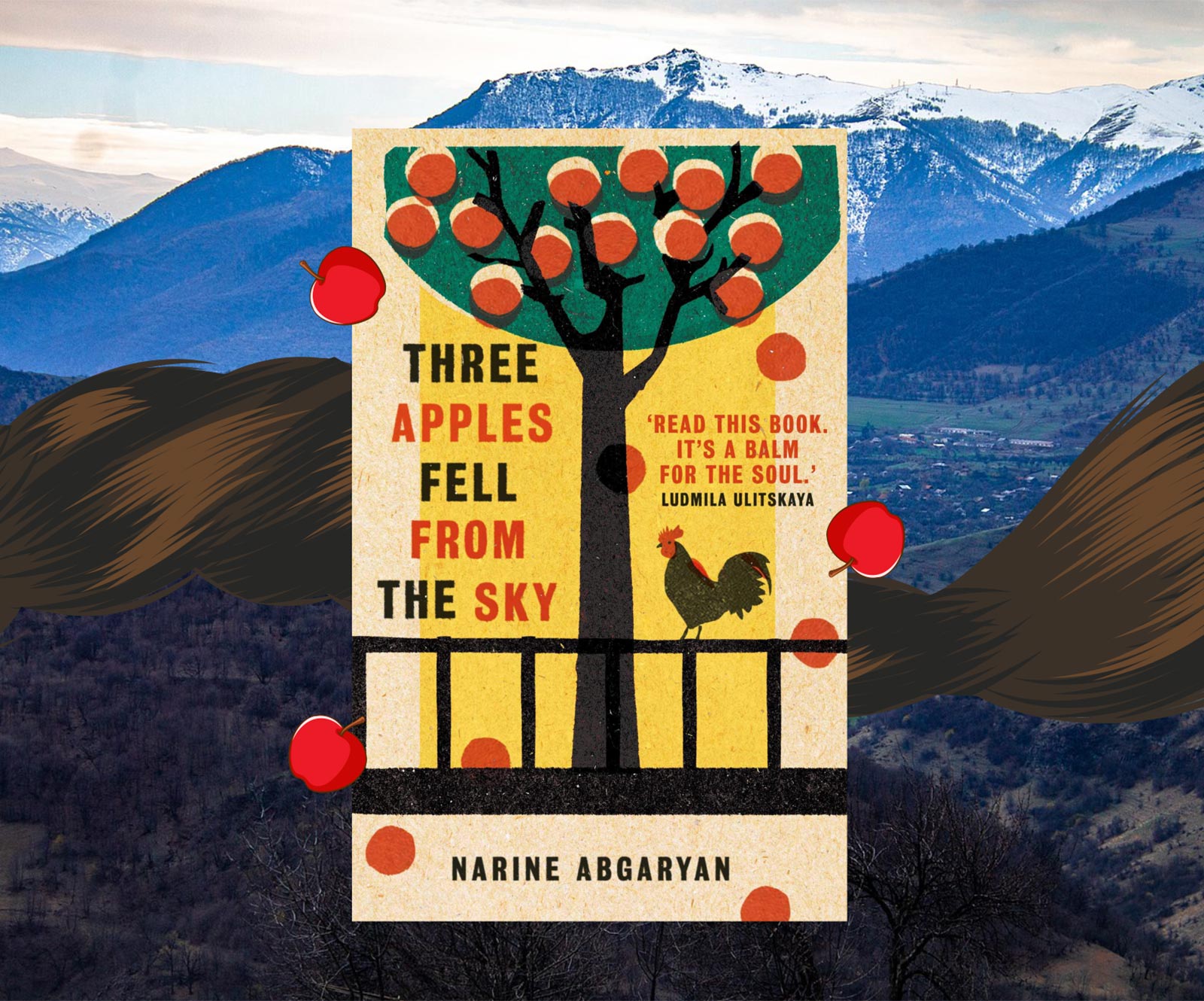Step into the outlandish world of wearable carpet sculptures, where Slavic mythical characters come alive

Created from intricate tufted carpets, Anna Perach’s sculptures embody female myths and legends. But her work truly begins when performers step inside those artworks — and begin the work of delving into the stories and the stereotypes they represent.
There are many reasons for visiting an art exhibition, but among the most common is the desire to escape: to shun reality and be transported someplace else. Stepping through an imaginary threshold between the “real space” and the “art space” can almost feel ritualistic. Mundane objects reveal their hidden meanings, while canvases provide windows into both ourselves and different worlds. Our interactions become quiet, and temporality thickens around us — we spend hours standing or sitting in one place, contemplating, or sharing our experience with others.
Ukrainian-born Israeli artist Anna Perach also seeks to create these intimate ritualistic spaces, conjured from the power of art. By creating wearable sculptures from hand-crafted carpets, Perach re-imagines Slavic mythology and its archetypal female characters. By staging their stories through her own contemporary rituals, her practice explores relevant issues around current politics and identity.
Perach’s work is steeped in rich symbolism and colour, drawing on the language of folklore and the historic tradition of embroidery to engage with ideas of nostalgia, heritage and belonging
Perach first began exploring her Slavic heritage as it was projected onto her by others as an immigrant in Israel. She later earned her diploma in Arts Therapy and Counselling before pursuing her MFA at London’s Goldsmith’s university, where she discovered the traditional method of carpet tufting to give shape to her intricate sculptures.
Now she blends the two. Visually, Perach’s work is steeped in rich symbolism and colour, drawing on the language of folklore and the historic tradition of embroidery to engage with ideas of nostalgia, heritage and belonging. They intertwine with her own memories of growing up in Ukraine, and are interlaced with her experiences as woman, artist, mother, and daughter.
The sculptures themselves are inspired by specific gendered archetypes, such as the evil hag or the naïve maiden which appear a wealth of global myths and legends. Even the creation of each artwork, and the intricate method of carpet tufting itself, is described by the artist as an intimate and ritualistic process which is tightly linked to gender: “I love the labour-intensiveness of carpet tufting and consciously emphasise its decorative, spectacular potential. I want to foreground these traditionally female crafts that were historically regarded as secondary and less valuable within Fine Art. Working with finished carpets made me feel restricted in terms of their given imagery and the production methods by which they were made, which is what brought me to the decision of producing my own.”
A performer wearing Perach’s Alkonost (2019)
Once made, Perach’s pieces can be displayed as free-standing sculptures. But it’s by allowing others to wear these sculptures that Perach truly creates another world. By wearing the artworks, performers can use them to create their own rituals, bestowing a new-found agency upon the female archetypes that the costumes represent.
In her wearable sculpture Baba Yaga (2019), Perach explores the story of the witch Baba Yaga, who, according to folklore, is an outcast living by herself in the forest. She is labelled as a dangerous and ugly “hag” by the rest of society. But an alternative, critical reading of this tale is one of Baba Yaga being shunned by society by refusing to conform to social norms and other people’s desires. Perach highlights the character’s profound connection to nature as another quality that has been historically associated with witchcraft and thus demonised.
“To me, Baba Yaga is the symbol of a matriarch. There is something threatening about her; she is powerful and self-sustained,” says Perach. The weighty, large headpiece symbolises Baba Yaga’s matriarchal status and wisdom, while also giving her an ominous appearance. The thick cloak or robe has a dark, earthy colour palette of blacks, greys, browns and maroons and is embroidered with imagery alluding to nature and witchcraft.
Perach is fascinated by archetypal women with the ability to “give or take life”. In Baba Yaga’s case, she has the power to bless visitors with good fortune, but she can also kill them. For her sculpture Alkonost (2019), another wearable piece, this power is borne out of a different story. In Russian mythology, Alkonost is a hybrid female creature of the underworld, with a woman’s head and a bird’s body. She initially appears as a naïve maiden, conforming to society’s wishes until she is betrayed by her husband-to-be. It is then that Alkonost is “reborn”, transforming into a seducer and destroyer of men and claiming her own autonomy and power. The exposed white breasts and graceful headpiece of Perach’s design present Alkonost as a dual creature, embodying both purity and sexuality.
A performer wearing Perach’s Baba Yaga (2018)
In one performance at Mimosa House in London, the two characters were brought together in an exploration of themes such as female rivalry, co-dependence and mutual empowerment. It featured two performers wearing Perach’s sculptures and followed through various independent and shared interactions between the characters Baba Yaga and Alkonost, representing different roles and developmental stages embodied by women towards each other and external social structures. Surrounded by the audience, each of the two figures followed a unique interpretive choreography of ritualistic movements varying between contemporary dance and physical improvisation. Baba Yaga moves rather slowly but dominantly through the space, her appearance and languid movements evoking an eerie effect, interrupted with occasional huffing and puffing sounds that enhance her intimidating presence. In contrast, Alkonost is impulsive and jumpy, charged with youthful and impatient energy. Thick white strands of artificial hair flow from the sculpture’s sleeves, making them ruffle and dance through the erratic movement of the arms, evoking a coquettish bird. According to the Slavic myth, Alkonost seduces her victims with her irresistible singing voice, which is echoed through her contemporary reincarnation’s eruptions into abstract vocals.
Perach’s artwork unfolds through shared gestures of storytelling between the artist, her sculptures, the fictional character on which they’re based, the performers embodying those sculptures, and the audience
Earlier in her practice, Perach was drawn to making masks as tools to reveal and conceal parts of one’s identity, but gradually her focus shifted onto full-body sculptures, structures where performers could full immerse themselves into the mythological characters. “I’m interested in the merging of the character and the performer. I often ask the individuals wearing the sculptures to wholly embody the character, along with its restrictions,” says Perach.
As such, her artwork unfolds through shared gestures of storytelling between Perach herself, her sculptures, the fictional character on which they’re based, the performers embodying those sculptures, and the audience. Taking place within the context of the museum or gallery, these colourful, compelling characters move, jump, dance and interact with each other, their environment, and the audience, in a way that creates an intriguingly uncanny experience, and a “third ground” between magic and reality, where individual experiences conjoin and are elevated into the collective. By presenting the narratives of these mythological archetypes within a jointly-created transgressive realm, Perach opens up a dialogue around prescient issues around gender politics, ecology and cultural heritage in a poetic, symbolic language.
Pretty Lady Kim (2020) by Anna Perach
Perach is now also starting to move away from established fairy tales to explore these issues on her own terms. Pretty Lady (Kim) is a recent example of a hybrid between an existing archetype and Perach’s own imagination. This independent sculpture is inspired by both historical fertility sculptures and by the contemporary beauty ideal embodied by the celebrity Kim Kardashian. Both inform the curvaceous, sensual shape of the sculpture and its significantly large pelvic area and buttocks, a cross-temporal reflection on the fetishisation of the female form. “I’m growing more confident in creating my own stories with the characters instead of strictly sticking to existing tales,” Perach explains, emphasising the significance of the performances and the characters fusing intimate and universal experience.
Whether based on modern problems or mythical creatures, stepping inside these all-encompassing sculptures allows performers — and the audience who watch them — to enter a hallowed “third ground”, a symbolic space with an alternative language. Characters like Baba Yaga and Alkonost aren’t simply human or animal, past, present, real or fictional. Their stories and identities can manifest themselves in different ways depending on who is inside them and who is watching them, fusing their own stories on the joint axis of individual and collective histories, cultures, and locations. They carve out a temporary therapeutic space from the fabric of reality. Within this shared “third” space between fiction and reality, participants can process the complexities of personal and collective experience by cultivating rituals of creativity, empathy, curiosity, and care.
A close-up of Pretty Lady Kim (2020) by Anna Perach
Reflecting on this therapeutic dimension, Perach talks about her own experience working as a therapist: “I often see how children act out their emotions, thoughts and ideas through playing games, allowing them to process and live through their feelings in a safe context. My role as a therapist is often to mirror back their subconscious behaviours to them and facilitate the process of reconciliation. Stories and archetypes and myths can similarly act as a mirror to help us process trauma and think of alternatives. Art can provide the framework through which such narratives are presented to us.”


